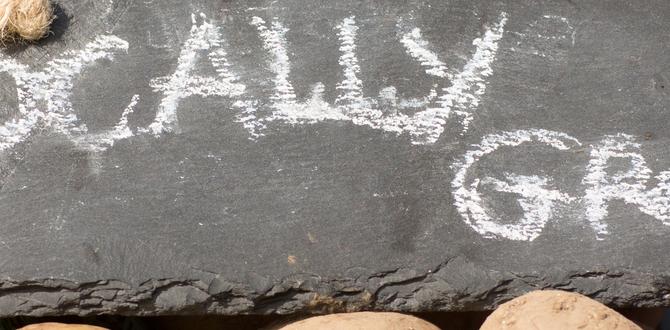Basque Country food neighborhoods offer a delicious journey through diverse culinary landscapes, from bustling pintxos bars to serene sidrerías. Understanding these distinct areas helps you discover authentic flavors and experience the heart of Basque gastronomy. This guide breaks down the essential neighborhoods for food lovers.
Ever felt overwhelmed trying to find the best eats in a new place? Staring at a map or a long list of restaurants can be a bit much. Basque Country is a foodie’s dream, but its amazing food scene is spread across charming neighborhoods. It’s easy to miss out on hidden gems if you don’t know where to look. Don’t worry! We’ll explore the most delicious food neighborhoods, making your culinary adventure simple and fun.
Get ready to uncover where to find the most unforgettable flavors, from the lively pintxos streets to the traditional cider houses. We’ll guide you through each area so you can eat like a local and truly savor the Basque experience. Let’s embark on this tasty journey together!
Unlocking the Flavors: A Beginner’s Guide to Basque Country Food Neighborhoods
Basque Country, a region straddling the border of Spain and France, is a culinary mecca. Its food culture is as rich and varied as its stunning landscapes. For travelers eager to taste authentic Basque cuisine, understanding the distinct food neighborhoods is key. Each area offers a unique window into the region’s gastronomic soul, from the urban buzz of San Sebastián to the rustic charm of its coastal towns.
Navigating a new city’s food scene can feel daunting. Where do you start? What should you try? This guide is designed to simplify that for you. We’ll explore the most celebrated food neighborhoods, highlighting what makes each one special and why it’s a must-visit for any food lover. Think of this as your edible map to the Basque Country!
The Heart of the Pintxos: Casco Viejo (Old Town), San Sebastián
When someone mentions Basque food, San Sebastián (Donostia) often comes to mind, and its Old Town, Casco Viejo, is the epicenter of the pintxos experience. This is where the tradition of hopping from bar to bar, enjoying small, artfully crafted bites alongside a glass of local wine or cider, truly shines.
What to Expect in Casco Viejo:
- Pintxos Galore: This is the star attraction. Pintxos are more than just tapas; they are miniature culinary masterpieces, often served on a slice of bread and held together with a toothpick (pintxo means “spike”).
- Bustling Atmosphere: The narrow streets of Casco Viejo are alive with energy, especially in the evenings. Expect lively crowds and a vibrant hum of conversation.
- Variety is Key: From classic bites like Gilda (anchovy, olive, and chili pepper skewer) to innovative creations featuring local seafood and cheeses, the options are endless.
- Traditional Bars & Modern Twists: You’ll find historic establishments that have been serving pintxos for generations alongside newer spots pushing the boundaries of flavor and presentation.
Must-Try Pintxos:
- Gilda: The quintessential pintxo – a true taste of the Basque Country.
- Tortilla de Patatas: A thick Spanish omelet made with potatoes and onions, often with a perfect, slightly gooey center.
- Txangurro Gratinado: Don’t miss the baked spider crab, a rich and savory delight.
- Seafood Pintxos: Fresh anchovies, bacalao (cod), and grilled squid are local favorites.
Wandering through Casco Viejo, you’ll stumble upon countless bars, each with its own specialties. Don’t be afraid to point, ask for recommendations, and try a little bit of everything. The beauty is in the exploration!
The Gastronomic Gem: Gros & Parte Vieja (New Town), San Sebastián
While Casco Viejo is the historic heart, the Gros neighborhood and the eastern part of the Parte Vieja (often considered the “New Town” area adjacent to the old) offer a more contemporary gastronomic scene, alongside excellent traditional options. This area is a favorite among locals and is slightly less tourist-heavy, providing a more authentic feel for some.
Distinguishing Gros & New Parte Vieja:
- Michelin-Starred Dining: San Sebastián boasts one of the highest concentrations of Michelin stars in the world, and many of these acclaimed restaurants are located in or near this area.
- Modern Pintxos Bars: You’ll find innovative pintxos here, often with a fusion of traditional ingredients and avant-garde techniques.
- Local Hangouts: Gros, in particular, is a residential area with many bars and restaurants frequented by locals, offering a great chance to mingle and experience everyday life.
- La Concha Promenade Access: This neighborhood offers easy access to the iconic La Concha beach and promenade, making it a great place to combine sightseeing with culinary exploration.
This area is perfect if you’re looking to experience both high-end dining and more laid-back, authentic local spots. It’s a dynamic culinary landscape that constantly evolves.
Coastal Charms and Fresh Catches: Getaria
A short, scenic train or bus ride from San Sebastián lies Getaria, a picturesque fishing village renowned for its exceptional seafood, particularly its grilled fish. This is a destination for those who appreciate simplicity and quality ingredients prepared with time-honored methods.
The Allure of Getaria’s Seafood:
- Elkano and Kaia: These are the legendary restaurants that put Getaria on the culinary map, famous for their whole grilled turbot (Rodaballo).
- “A la Parrilla” (Grilled): The star of the show is fish cooked over an open wood fire on the beachside parrillas. The smoky, charred flavor is unparalleled.
- Freshness is Paramount: The fish is typically caught that same day, ensuring the highest quality and taste.
- Charming Harbor Town: Beyond the food, Getaria itself is a delightful place to explore, with a lovely harbor, beaches, and a charming old town.
Visiting Getaria is a pilgrimage for seafood lovers. The directness of the preparation – letting the natural flavors of the incredibly fresh fish shine – is what makes it so special. It’s dining at its most elemental and delicious.
Txakoli Wineries and Rural Flavors: Txakoli Region (Getariako Txakolina)
While not a single neighborhood, the region known for producing Txakoli wine, especially around towns like Getaria, Zarautz, and Lekeitio, offers a unique food experience. Txakoli is a slightly sparkling, dry white wine native to the Basque Country, and visiting a txakolindegi (winery) is an unforgettable outing.
Experiencing Txakoli Vineyards:
- Wine Tasting with Views: Many txakolindegis are nestled in hillsides with stunning views of the coast or countryside.
- Traditional Pouring: Txakoli is traditionally poured from a height to aerate the wine and create a slight fizz.
- Gastronomic Pairings: Wineries often serve simple yet delicious pinxtos or meals featuring local produce, anchovies, and of course, fresh seafood, all optimized to pair with their wine.
- “Sagardotegi” Experience (Cider Houses): While txakoli is wine, the complementary experience of visiting a sagardotegi (cider house) in cider-producing regions like Astigarraga near San Sebastián is also crucial. Here, you’ll drink artisanal cider directly from large barrels and enjoy a traditional, set menu including cod omelets, grilled steak, and cheese with quince paste.
A visit to a txakoli winery or a cider house is more than just a tasting; it’s an immersion into Basque rural life and culinary traditions. You can find more information on visiting wineries and understanding wine regions at resources like Wine-Searcher’s guide to the Basque Country.
Bilbao’s Culinary Hubs: Casco Viejo & Indautxu
Bilbao, the region’s largest city, offers its own vibrant food scene, distinct from San Sebastián but equally dedicated to quality and tradition. The city has undergone a remarkable transformation, and its culinary offerings have kept pace.
Bilbao’s Food Neighborhoods Explained:
Casco Viejo (Old Town), Bilbao:
- Historic Pintxos Trail: Similar to San Sebastián, Bilbao’s Old Town is packed with traditional bars serving excellent pintxos.
- “Siete Calles” (Seven Streets): This is the historic heart, perfect for an evening crawl to sample local specialties.
- Mercado de la Ribera: One of Europe’s largest covered markets, this is a fantastic place to see local produce, fresh meats, and seafood, and it also houses several food stalls and bars offering a taste of market life.
Indautxu & Ensanche:
- Modern Dining Scene: These central neighborhoods are home to many of Bilbao’s trendier restaurants, offering a mix of traditional Basque cuisine with contemporary flair.
- Guggenheim Proximity: Areas around the iconic Guggenheim Museum offer a range of dining options to suit all tastes and budgets.
- Michelin-Starred Restaurants: Bilbao also boasts several Michelin-starred establishments, often found in or around these more modern districts.
Bilbao presents a more urban gastronomic adventure. Exploring its Casco Viejo for classic pintxos and its modern districts for innovative cuisine provides a well-rounded taste of the city.
The Charm of the coast: Lekeitio
Lekeitio is one of the most beautiful fishing villages on the Basque coast, offering a more laid-back and authentic experience. It’s a place where you can truly soak in the local atmosphere and enjoy incredibly fresh seafood.
Why Visit Lekeitio for Food:
- Seafood Restaurants with Harbor Views: Enjoy freshly caught fish and shellfish at restaurants overlooking the picturesque harbor.
- Local Markets: Discover local produce and artisanal products at the town’s market.
- Anchovies and Seafood Specialties: Lekeitio is particularly known for its excellent anchovies, often served in various forms.
- “Kiskis” (Small Plates): Similar to pintxos, you’ll find local bars offering small, delicious bites perfect for a casual meal.
Lekeitio offers a quieter, more traditional experience. It’s the perfect place to slow down, enjoy the coastal beauty, and savor the simple, fresh flavors of the sea.
Planning Your Culinary Pilgrimage: Tips for Exploring Basque Food Neighborhoods
Now that you know the key food neighborhoods, here’s how to make the most of your culinary exploration. These tips will help you navigate with confidence and truly enjoy everything the Basque Country has to offer.
Key Strategies for Food Exploration:
- Pace Yourself: Don’t try to eat everything in one go. Basque cuisine is hearty! Enjoy small portions and move from place to place.
- Embrace the Pintxos Bar Crawl: This is the quintessential Basque experience. Try one or two pintxos at several different bars.
- Learn a Few Basque Phrases: A simple “Kaixo” (hello) or “Eskerrik asko” (thank you) goes a long way. Even better: “Zer gomendatzen duzu?” (What do you recommend?).
- Drink Local: Pair your food with Txakoli wine or Basque cider for the full experience.
- Ask Locals: Don’t hesitate to ask barkeeps or locals for their favorite spots.
- Consider a Food Tour: In cities like San Sebastián or Bilbao, guided food tours can be an excellent way to discover hidden gems and learn about the culture from an expert.
- Check Opening Hours: Some smaller bars may have specific hours or close between lunch and dinner.
Understanding Basque Dining Etiquette:
- Standing is Okay: In many pintxos bars, it’s perfectly normal to eat standing up at the bar.
- Keep Your Plates: Usually, you’ll stack your used pintxos plates and toothpicks on the counter.
- Pay at the End: Keep track of what you’ve eaten, or your server will. You typically pay your bill when you’re ready to leave.
- Reservations for Restaurants: For sit-down restaurants, especially those with Michelin stars or popular local spots, reservations are often essential.
Traveling with dietary needs, such as requiring adult or child diapers for comfort and discretion during long travel days or specific activities, is also part of planning a stress-free journey. Many travel-friendly options are available online, offering peace of mind so you can focus on enjoying the incredible food and culture. For more information on travel-friendly adult diaper solutions, you can explore resources like Depend’s Fit-Flex Underwear, which offers comfort and security. Similarly, for children, checking options like Pampers Swaddlers can ensure little ones remain comfortable on their adventures.
A Culinary Map: Key Food Neighborhoods at a Glance
Here’s a quick reference table to help you pinpoint the best areas for your foodie adventures:
| City/Area | Dominant Food Experience | Key Highlights | Best For |
|---|---|---|---|
| San Sebastián – Casco Viejo | Pintxos | Historic bars, classic pintxos, lively atmosphere | First-time visitors, traditional pintxos lovers |
| San Sebastián – Gros & New Parte Vieja | Modern Pintxos & Fine Dining | Innovative pintxos, Michelin-starred restaurants, local vibe | Foodies seeking cutting-edge cuisine and a local feel |
| Getaria | Grilled Seafood | Legendary grilled turbot, fresh catches, charming village | Seafood aficionados, those seeking a coastal escape |
| Txakoli Region (e.g., Getaria, Zarautz) | Txakoli Wine & Rural Flavors | Winery visits, scenic views, local pairings | Wine lovers, those seeking a countryside experience |
| Bilbao – Casco Viejo | Pintxos & Market Culture | Historic pintxos, Mercado de la Ribera, traditional bars | Discovering Bilbao’s urban food scene, market explorers |
| Bilbao – Indautxu & Ensanche | Contemporary Basque Dining | Modern restaurants, fine dining, global influences | Those seeking upscale dining and trendy spots |
| Lekeitio | Coastal Charm & Fresh Seafood | Harbor views, local anchovies, relaxed village atmosphere | Those seeking a tranquil coastal food escape |
Frequently Asked Questions About Basque Country Food Neighborhoods
What’s the difference between pintxos and tapas?
Pintxos are typically more elaborate small dishes, often served on a slice of bread and held by a skewer, originating from the Basque Country. Tapas are smaller portions served as a snack, often with a drink, and are more common in other parts of Spain. While the lines can blur, pintxos are usually seen as a more refined and diverse culinary experience.
Do I need to speak Basque or Spanish to enjoy the food neighborhoods?
No, you don’t need to be fluent. While knowing a few basic phrases like “hola” (hello), “gracias” (thank you), and “la cuenta, por favor” (the bill, please) is appreciated, most people in tourist areas will speak some English. Pointing and smiling are universally understood!
Are there vegetarian or vegan options in Basque Country?
Yes, while Basque cuisine traditionally features a lot of seafood and meat, you can find vegetarian options. Look for tortilla de patatas (potato omelet), pimientos de Padrón (fried small green peppers), vegetable stews, and salads. Many modern restaurants are also very accommodating and offer creative vegan/vegetarian dishes. It’s always best to ask!
What’s the best time of day to go pintxos hopping?
The most popular time for pintxos hopping is in the early evening, typically between 7 PM and 9 PM, before dinner is traditionally served in Spain (which can be as late as 9:30 PM or





